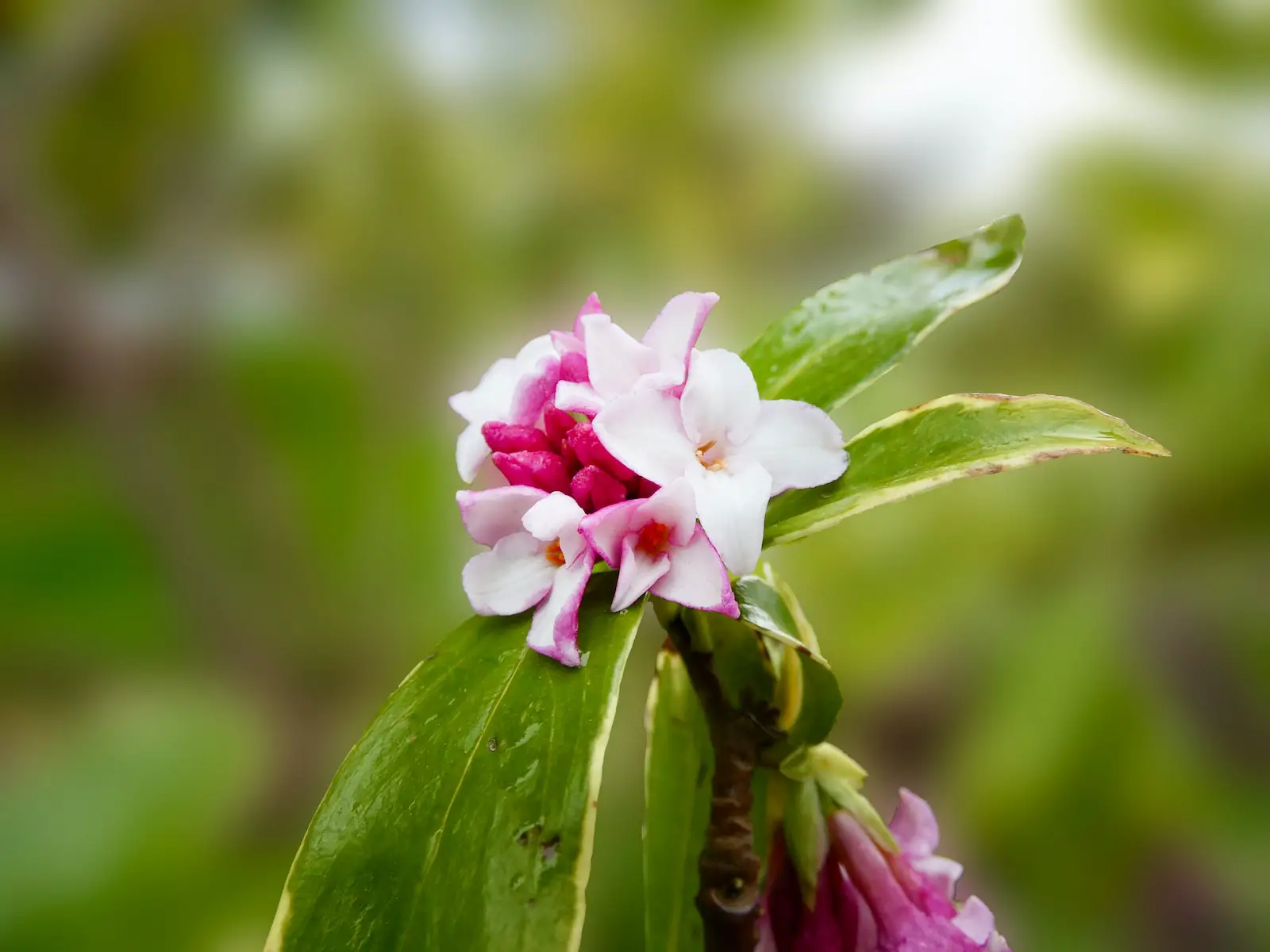Daphne, a name synonymous with fragrant beauty, refers to a genus of deciduous and evergreen shrubs renowned for their intoxicating aroma. Comprising about 50 to 60 species, Daphne plants are beloved for their stunning clusters of tubular flowers that bloom in late winter to early spring. The flowers, often white or pink, are a feast for the senses and can turn any garden into a scented paradise.
Daphne plants have a rich history intertwined with Greek mythology, where the nymph Daphne was transformed into a laurel tree to escape the god Apollo. In addition to its mythical lore, Daphne’s appeal extends to its charming berries and attractive foliage that offers year-round appeal. While the plant is beautiful, care should be taken, as all parts of most Daphne species are poisonous if ingested.
Growing Daphne can be both rewarding and challenging. They can be capricious and require careful attention to their specific needs, but with proper care, Daphne can be a stunning addition to gardens, particularly those in temperate climates. With its captivating fragrance and appealing aesthetics, Daphne certainly earns its place as a desirable ornamental plant.
| Attribute | Details |
|---|---|
| Common Names | Daphne |
| Botanical Name | Daphne |
| Family | Thymelaeaceae |
| Plant Type | Deciduous and Evergreen Shrubs |
| Mature Size | 3-4 feet tall and wide |
| Sun Exposure | Part shade |
| Soil Type | Moist, well-drained |
| Hardiness Zones | 4-9 |
| Native Area | Europe, Asia |
Daphne Care
Daphne plants require careful attention to flourish. They are particular about their growing conditions but repay the diligent gardener with aromatic flowers that can fill a garden with fragrance.
The planting location and soil type are vital factors to consider. Daphne prefers part shade and moist, well-drained soil that is rich in organic matter. Though somewhat finicky, Daphne’s care is straightforward once you understand its specific needs. Regular monitoring for signs of disease and pests will ensure that your Daphne remains healthy and vibrant.
Light Requirement for Daphne
Daphne thrives in part shade but can tolerate some morning sun. In regions with harsh summer sun, it’s wise to provide some afternoon shade to protect the delicate leaves from scorching.
Soil Requirements for Daphne
Well-drained soil that retains some moisture is ideal for Daphne. A mixture rich in organic matter with a slightly acidic to neutral pH will encourage healthy growth. Avoid heavy clay soils that retain water, as this can lead to root rot.
Water Requirements for Daphne
Watering Daphne consistently, especially during the growing season, is crucial. The soil should remain moist but not soggy. Overwatering or underwatering can cause stress to the plant, so find a balance that keeps the soil uniformly damp.
Temperature and Humidity
Daphne plants are suited for temperate climates and grow best in hardiness zones 4-9. They can tolerate cold winters but need protection from harsh winds. Moderate humidity is preferred, and care should be taken to ensure proper air circulation to prevent disease.
Fertilizer
A light application of a balanced, slow-release fertilizer in the spring can support Daphne’s growth. Avoid over-fertilizing, as this can harm the plant.
Pruning Daphne
Pruning is generally not required for Daphne and can even be harmful. If necessary, only remove dead or diseased branches, taking care not to cut into healthy wood. Pruning should be done after flowering to avoid removing future blooms.
Propagating Daphne
Daphne can be propagated through semi-hardwood cuttings taken in late summer. Rooting may take some time, and using a rooting hormone can increase success rates.
How To Grow Daphne From Seed
Growing Daphne from seed is a challenging and lengthy process, usually left to experts. If you choose to try, be patient, as germination can be slow and sporadic.
Common Pests & Plant Diseases
Scale Insects
Scale insects can be problematic, sucking sap from the plant.
Virus
Some Daphne plants are susceptible to viruses that can stunt growth.
Common Problems With Daphne
Leaf Yellowing
This can occur from overwatering or poor drainage.
Sudden Death
Daphne is notorious for sudden unexplained death, often related to its finicky nature.
Pro Tips
- Plant Daphne in a partially shaded spot to prevent leaf scorching.
- Ensure proper soil drainage to avoid root rot.
- Avoid unnecessary pruning, as Daphne can be sensitive to heavy cutting.
- Monitor for pests and diseases regularly to catch problems early.
- Enjoy the fragrance by planting Daphne near patios or walkways where its scent can be appreciated.



